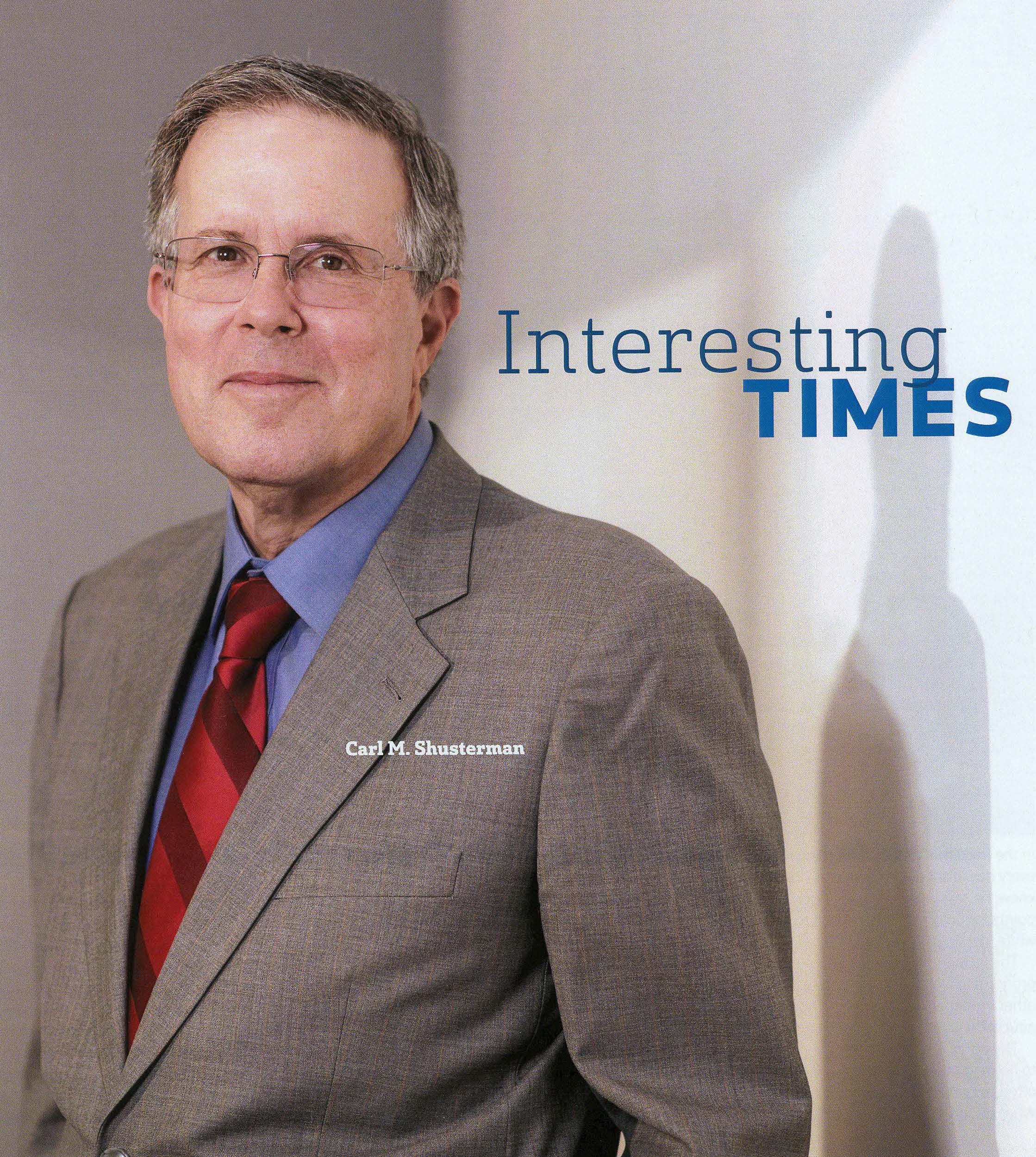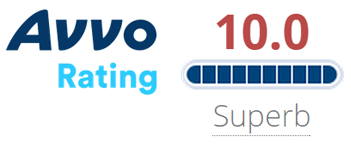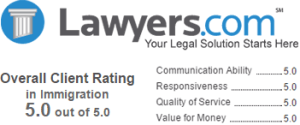Newsletter US Immigration Update January 1998
Volume Three, Number One
 SHUSTERMAN’S IMMIGRATION UPDATE is the Web’s most popular e-mail newsletter regarding U.S. immigration laws and procedures with over 40,000 subscribers located in more than 150 countries. It is written by a former INS Trial Attorney (1976-82) with over 30 years of experience practicing immigration law.
SHUSTERMAN’S IMMIGRATION UPDATE is the Web’s most popular e-mail newsletter regarding U.S. immigration laws and procedures with over 40,000 subscribers located in more than 150 countries. It is written by a former INS Trial Attorney (1976-82) with over 30 years of experience practicing immigration law.
Published by the Law Offices of Carl Shusterman, 600 Wilshire Blvd, Suite 1550, Los Angeles, California, 90017. Phone: (213) 623-4592 x0.
Subscribe to our E-Mail Newsletter, join the conversation on our Immigration Facebook Page, follow our Blog Posts and subscribe to our “How-To” Immigration Videos.
Client Reviews

The Best Lawyer!
“I had the best experience working with Law Offices of Carl Shusterman. The staff is very professional, trustworthy, responsive, knowledgeable and helpful.”
- Dr. R. Khan, Boston, Massachusetts
Read More Reviews
Zoom Consultations Available!
Newsletter US Immigration Update January 1998
Table of Contents
1. January 1998 State Department Visa Bulletin
2. Immigration Government Processing Time
3. The End of Section 245(i): January 14, 1998
4. U.S. Immigration Courts: Names, Addresses and Phone #’s
5. Immigration Trivia Quiz: States With No Income Tax
6. Time Magazine Names Immigrant As Man of The Year (Again!)
7. INS Proposes Massive Fee Increases (This is No Joke!)
8. Web Site: Assoc. of Professionals for Spousal Reunification
9. Private Bills: Congress as the Court of Last Resort
10. Answers to Immigration Trivia Quiz
1. January 1998 State Department Visa Bulletin
On December 11, 1997, we posted the January 1998 Visa Bulletin the same day that the State Department posted the dates on their web site.
Most of the Family categories moved forward seven weeks or less. The only significant forward movement occurred in the 1st preference category (unmarried adult sons and daughters of citizens) where there was a seven and one-half month advance Worldwide, following on the heels of a seven month advance in this category in December. Movement in the family categories for persons born in Mexico and the Philippines was not significant, ranging from no advance for Mexican first preference to five weeks for Philippines third preference (married sons and daughters of citizens).
Most of the Employment categories remained “current” (no backlogs). The unskilled workers advanced six months to December 1, 1990 while the religious workers category advanced three and one-half months in January, identical to its advance in December.
After their disastrous showing in December, in January, the mainland China categories advanced as follows: the first preference advanced a little over three months to April 8, 1997; the second preference moved forward almost seven months to March 15, 1996; while the third preference slowly moved ahead only five weeks to December 8, 1993.
In a bit of good news for Indian nationals, the second and third category which had remained as frozen as Lot’s wife during December, moved forward seven months and seven weeks, respectively, in January.
Repeating the explanation contained in our November update, the reason that India and China (PRC) are becoming increasingly backlogged is due simply to the law of supply and demand. Our immigration laws allocate approximately 26,000 visas for each country in the world, with no consideration given to the population of the country. Tiny Monaco and Andorra have roughly the same quota as the two most populous countries in the world China (PRC) and India. The only possible relief would be legislation which would create a system similar to Canada’s with no country quotas.
Immigrant visas for winners of the DV-98 lottery are current for most countries and regions. The exceptions are as follows: for January 1998, a DV rank cut-off has been established for two regions (Asia at 10,220 except for Bangladesh at 5,220, and Africa at 27,070) and for one European country, Albania at 9,291.
For an explanation of what the categories, dates and symbols listed below mean, see https://www.shusterman.com/greencardsthroughrelatives.html and https://www.shusterman.com/greencardsthroughemployment/
FAMILY CATEGORIES
| Categories | Worldwide | China (PRC) | India | Mexico | Philippines |
|---|---|---|---|---|---|
| 1st | 4-15-96 | 4-15-96 | 4-15-96 | 5-01-93 | 11-08-86 |
| 2A | 8-08-93 | 8-08-93 | 8-08-93 | 10-15-92 | 8-08-93 |
| 2B | 7-01-91 | 7-01-91 | 7-01-91 | 5-15-91 | 7-01-91 |
| 3rd | 7-08-94 | 7-08-94 | 7-08-94 | 2-01-89 | 8-08-86 |
| 4th | 6-08-87 | 6-08-87 | 10-01-85 | 11-01-86 | 3-17-78 |
EMPLOYMENT CATEGORIES
| Categories | Worldwide | China (PRC) | India | Mexico | Philippines |
|---|---|---|---|---|---|
| 1st | Current | 4-08-97 | Current | Current | Current |
| 2nd | Current | 3-15-96 | 5-01-96 | Current | Current |
| 3rd | Current | 12-08-93 | 2-08-95 | Current | Current |
| Unskilled | 12-01-90 | 12-01-90 | 12-01-90 | 12-01-90 | 12-01-90 |
| 4th | Current | Current | Current | Current | Current |
| Religious | 06-01-97 | 06-01-97 | 06-01-97 | 06-01-97 | 06-01-97 |
| 5th | Current | Current | Current | Current | Current |
2. Immigration Government Processing Times
 We link to the most recent immigration waiting times for each of the four USCIS Service Centers, the National Benefits Center and the Administrative Appeals Office. We also link to the processing times of all of the 83 USCIS District Offices and Sub-offices. We link to the Labor Department’s page entitled “Processing dates for labor certification applications”. Finally, we link to the State Department’s “Visa Wait Times” page.
We link to the most recent immigration waiting times for each of the four USCIS Service Centers, the National Benefits Center and the Administrative Appeals Office. We also link to the processing times of all of the 83 USCIS District Offices and Sub-offices. We link to the Labor Department’s page entitled “Processing dates for labor certification applications”. Finally, we link to the State Department’s “Visa Wait Times” page.
3. The End of Section 245(i): January 14, 1998
File your visa petition or appliction for labor certification by Wednesday. The next day section 245(i) disappears, presumably forever. Section 245(i) permits persons with approved visa petitions to apply for adjustment of status in the U.S. where their priority date becomes “current” if they meet all of the necessary requirements and pay a substantial fine.
Many persons remain unaware that even persons who are presently outside the U.S. can take advantage of section 245(i) if they enter the U.S. before their priority dates become current. For example, a person with an approved visa petition submitted on or before January 14, 1998 who enters the U.S. after that date may adjust status even if they fall out of legal status before they submit their applications for adjustment of status.
After January 14, 1998, those who do not have visa petitions or labor certifications filed on their behalf are out of luck. Remember, however, that some persons who are out-of-status may continue adjust under section 245(a). These include persons who are immediate relatives (spouses, parents – if the petitioning U.S. citizen son or daughter is 21 years of age, and children – unmarried and under 21 years of age) of U.S. citizens who entered the country legally and not as crewmen, transits without visas, etc. Also, newly-enacted section 245(k) provides that beneficiaries of employment-based visa petitions may adjust status if they have not been unlawfully present in the U.S. for more than 180 days in the aggregate.
Caveat: Qualifying for section 245(i) does not immunize a person from deportation or removal. You may have to avoid the INS for several years in order to take advantage of section 245(i).
4. U.S. Immigration Courts: Names, Addresses and Phone #’s
Practice before the U.S. Immigration Courts was a relatively relaxed affair when I served as an INS Trial Attorney in the early 1980’s.
Today, things are much more complex. In some respects, a mood of zero tolerance prevails. For example, it used to be true that if new evidence suddenly surfaced which would affect the outcome of your cause, you (or your attorney) could simply submit a Motion to Reopen your case to the appropriate tribunal. Now, first by regulation and then by law, there are strict time limits on your ability to file such motions.
In a recent case, our client married his long-time U.S. citizen girlfriend while his request for asylum was on appeal with the Board of Immigration Appeals (BIA). It is now required that a visa petition be submitted to, and approved by, the INS before a Motion to Reopen the case may be submitted to the BIA. The INS has a policy of requiring an interview with both spouses before such a visa petition can be granted.
Getting the INS marriage unit to obtain the administrative file from the INS litigation unit can be a major undertaking even though both units are located in the same building. After numerous requests by phone and in writing, eventually the intervention of the INS District Counsel was required to physically move the file to the proper unit. The interview was scheduled, and the visa petition approved. However, while this whole charade was occurring, the BIA denied request for asylum and a petition for review to the Federal Courts was required.
In the meantime, we moved that the hearing be reopened by the BIA to allow our client to adjust status to permanent resident through his citizen wife. The BIA rejected our motion, correctly pointing out that more than 90 (but less than 100) days had elapsed before the INS had approved the visa petition, and although we had submitted our Motion to Reopen almost instantaneously with the approval of the visa petition, the law did not permit the BIA to reopen a case filed more than 90 days after the issuance of an order.
Eventually, the problem was solved when we persuaded the INS to join us in a Joint Motion to Reopen the case (no 90 day limit on joint motions). The INS is less than enthusiastic about joint motions, however, and agreed to do so only after the citizen wife slit her wrists in a suicide attempt and had to be placed under psychiatric care. She was, understandably, distraught over the impending separation from her husband, and probable bankruptcy of his one-man business.
Obviously, time is of the essence in proceedings before the U.S. Immigration Courts. Since our practice involves representing clients in hearings before courts in different parts of the U.S., the first step is to locate the proper location of the court, the name of the Immigration Judge and the date and time of the next hearing.
Fortunately, the Justice Department has published such a list, and it is available for your use at
https://www.shusterman.com/eoirjudg.html (This link is no longer operational.)
and at
https://www.shusterman.com/eoirjud2.html (Link is no longer operational.)
If you know the eight-digit alien number of the person involved, you may also be able to obtain valuable information about his upcoming hearing by calling the following phone number: 1(800) 898-7180 1(800) 898-7180 . Before you do, however, you may wish to read
https://www.shusterman.com/immigrationcourt800phonenumber.html
5. Immigration Trivia Quiz: States With No Income Tax
In my two decades as an immigration lawyer, some people tend to ask me questions which are not strictly within my limited area of expertise. I try to refer questions about corporate law, tax law, criminal law, family law, to experts in those fields
However, I recently learned the answer to a question which persons eager to minimize their taxes have asked me on numerous occasions: What states have no personal income tax?
Hint: There are nine such states.
6. Time Magazine Names Immigrant As Man of The Year (Again!)
In the January 1997 issue of SHUSTERMAN’S IMMIGRATION UPDATE, we reported that Time Magazine had named Dr. David Ho, a young Taiwanese-born, American immigrant as its Man of the Year. For more information about Dr. Ho and his accomplishments, see
https://www.shusterman.com/newsletterusimmigrationjanuary1997.html#10
Now, one year later, Time Magazine has selected its new Man of the Year, and once again, the individual is an immigrant. He is the CEO of Intel Corporation, the company whose leadership in the microchip industry has revolutionized information technology and has heavily contributed to America’s prosperity over the past decade.
Andy Grove, born in Hungary, is a survivor of the Nazi Holocaust and the Soviet occupation, who was admitted to the U.S. as a refugee in 1956 at the age of 20. States Grove: “I was always told (in Hungary) that I was undesirable for one reason or another. I got to the U.S. and I expected some of the same because I was an immigrant. And there wasn’t.”
Read about Andy Grove, about Intel, about the history of the microchip, and listen to Grove’s November 20, 1997 keynote speech at the Asia Pacific Information Technology Summit at
http://content.time.com/time/magazine/article/0,9171,987587,00.html
This is not the first time SHUSTERMAN’S IMMIGRATION UPDATE has recognized Andy Grove and his accomplishments. He was featured in Question #2 in our July 1997 Immigration Trivia Quiz. For a short biographic sketch, see
https://www.shusterman.com/quiz4.html (Link no longer operational.)
Congratulations, Andy!
7. INS Proposes Massive Fee Increases (This is No Joke!)
According to “Moore’s Law” (developed by Intel co-founder Gordon Moore): The speed of microchips will double in power and halve in price every 18 months.
Those of us who have traded in our 286’s for 386’s for 486’s for Pentiums, etc., etc. know that the speed of microchips has followed the path predicted by Moore’s law. What is even more surprising is that with every new improvement, the price of the chip drops! Is Andy Grove a saint since he only charged us $500 for a Pentium II, a chip that is many thousand times faster than the old 286? Not at all. The simple answer is that Intel is operating in a highly competitive environment. If Andy tries to charge too much for his chips, we will simply buy our chips from his competitors and at a lower price.
However, in a monopoly situation (i.e., when there is only one supplier of a scarce good), the inverse is true. Even as the speed of INS processing of petitions and applications continues to slow, the agency’s fee structure continues to increase. If a citizen who is petitioning for his wife and children to join him in the U.S. dares to object, the government wants him to know that he has plenty of other options: Immigrate to Australia or Canada instead!
All of the above is simply prelude to the INS’s newest pronouncement: There will be massive immigration fee increases coming soon. On Monday, January 12, 1998, INS issued a proposed regulation announcing that it is planning to raise fees on over 30 types of applications including those for naturalization, adjustment of status and petitions for nonimmigrant visas.
The fee for a nonimmigrant visa petition will rise from $75 to $110 while the fee for an application for adjustment of status will increase from the $130 to $220. The naturalization fee will more than double from $95 to a whopping $225! To see the entire list of proposed fee increases, see
and click on “INS Fee Increases (Proposed)”
No surprise. INS generated $652 million last year through filing fees. With the gradual phase-out of the $200 million per year generated by section 245(i), someone has to make up for the shortfall. And with the INS budget more than doubling in the last few years (courtesy of the U.S. taxpayers), one did not have be psychic to predict a hefty INS fee increase in 1998.
INS pledges it won’t allow the increases to take effect until after a 60-day “public comment” period and until the agency can improve service to customers. However, often much of what the INS calls “service improvements” occur strictly in the eyes of the beholder. Since November 1996, the waiting times to receive naturalization interviews have increased in many cities from six months to almost two years. Ditto for green card interviews: Prior to 1995, it normally took about 90 days to obtain a green card interview. Now, the wait often exceeds one year. If INS brings its waiting times for naturalization back down to six months and those for adjustment of status return to 90 days, will this “service improvement” justify a fee increase?
8. Web Site: Assoc. of Professionals for Spousal Reunification
Sometimes, an immigration issue arises that transcends partisan politics. One of these issues is the importance of keeping the members of a nuclear family together.
The simple fact, however, is that while the law permits citizens and nonimmigrants to live together in the U.S. with their spouses and minor children, lawful permanent residents have to wait six to seven years to bring their spouses and children to the U.S.!
Finally, there is an organization called the Association of Professionals for Spousal Reunification (APSR) which has formed to lobby Congress to change the laws in order to reunite families. APSR has already been successful in having two bills introduced in the House of Representatives in October and November of 1997.
They maintain an excellent web site which may be accessed as follows: See
(Web site is no longer operational.)
and scroll down to “Organizations”. Then click on Association of Professionals for Spousal Reunification to learn more about their organization and the important work that they are doing.
I am particularly honored to be the first immigration attorney to be listed on their web site in support of their cause. When APSR first contacted me, I told them that I did not agree with the limited aims of either of the two bills that had been introduced in Congress to promote family reunification. Indeed, I think that APSR’s legislative goals are too limited. APSR offered me the opportunity to state my views in an article. They posted my article on their web site at
http://www.apsr.org/shusterman.html (Link is no longer operational.)
Family reunification is truly a cause which is worthy of support. Kudos to the leadership of APSR for being willing to include differing viewpoints on their web site.
9. Private Bills: Congress as the Court of Last Resort
What happens to all those hardship cases who can no longer obtain permanent residence because of the combination of the entitlement bars and the termination of section 245(i)? What about applicants for suspension of deportation and cancellation of removal who were not born in Central America or in the Old Soviet Bloc? Are these people completely without a remedy?
If all else fails, one can always tell his tale of woe to his Member of Congress. If the claim is meritorious, the Congressman or Senator can introduce a private bill on behalf of the constituent. If the bill passes both Houses of Congress and is signed by the President, the constituent becomes a lawful permanent resident or even a citizen.
Throughout the history of the U.S., over 7,000 private bills have been enacted into law. Recently, however, the number of private bills introduced have dropped off precipitously, from over 7,000 in the 90th Congress (1967-68) to a mere 14 in the 104th Congress (1995-96).
What type of private bills become law? Usually only widows, orphans and those with terminal diseases need apply. However, there are exceptions. About 10 years ago, a famous movie actress prevailed upon one of her ex-husbands (who happened to be a U.S. Senator) to sponsor a private bill on behalf of her adult son from one of her prior marriages, a permanent resident who had been convicted of a drug offense. The private bill easily passed both houses of Congress and was signed by the President.
Lesson: If your spouse or ex-spouse is a U.S. Senator, your chances of success seem to improve markedly. Of course, with the end of judicial review for discretionary denials of relief from deportation (October 30, 1996), the effective date of the entitlement bars (September 27, 1997), the new affidavit of support (December 19, 1997), and the termination of section 245(i) for future applicants (January 14, 1998), the number of hardship cases is bound to increase exponentially and hopefully, the number of private bills will increase accordingly.
If you are seeking to have a private bill introduced, remember the Old Scout rule: Be Prepared! Before you pay a visit to your Congressman or Senator, it is best to know the rules. You may even want to print out a copy to take with you. The Senate rules for private bills may be found at
https://www.shusterman.com/privatebillrulessenate.html
while the House rules may be found at
https://www.shusterman.com/privatebillruleshouseofrepresentatives.html
Good luck!
10. Answers to Immigration Trivia Quiz
The seven states with no personal income tax are as follows: (1) Alaska, (2) Florida, (3) Nevada, (4) New Hampshire, (5) South Dakota, (6) Tennessee, (7)Texas, (8) Washington and (9) Wyoming.
Carl Shusterman
Newsletter US Immigration Update January 1998 – Quick Links
About Us
Back Issues of Our Newsletter
Citizenship
Client Testimonials
Forms Download
Green Cards
Job Search
PERM
Processing Times
Schedule a Legal Consultation
Subscribe to Our Newsletter
Success Stories
Temporary Visas
Visa Bulletin
January 12, 1998
Disclaimer: This newsletter is not intended to establish an attorney-client relationship. All information contained in this newsletter is generalized. Any reliance on information contained herein is taken at your own risk.








